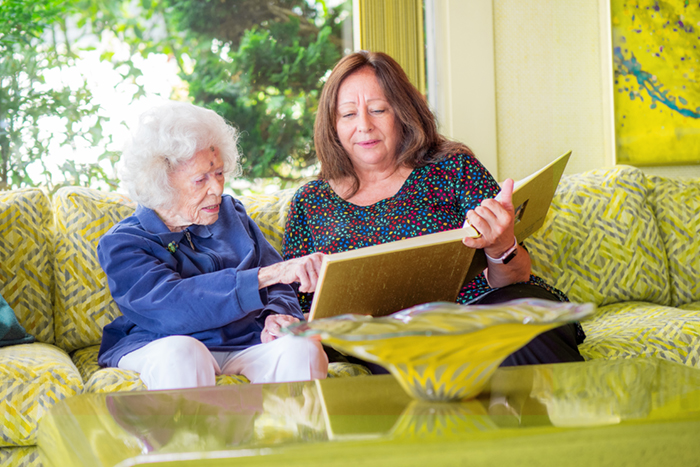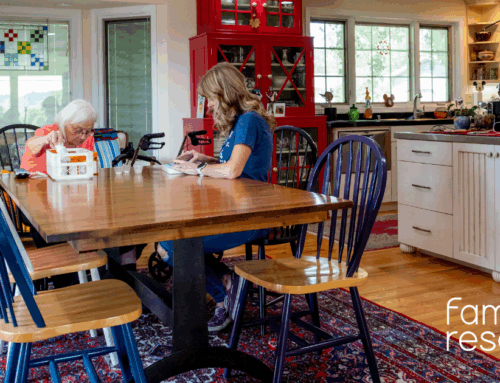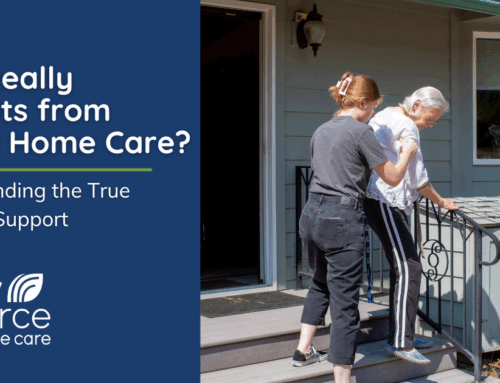When the needs of a loved one become greater than what a family can manage on their own and the loved one living independently is no longer an option, many are faced with a tough decision: uproot your loved one and move them into an assisted living facility, move the loved one into your home and try to provide care on your own, or keep your loved one in their home and hire a live-in caregiver.
Numerous studies show that most seniors want to stay in their own homes and while assisted living facilities are staffed 24/7, the care isn’t necessarily one-on-one or around the clock. And, for many seniors, the stress of a move can lead to confusion, anxiety, and depression.
That’s where live-in care comes in.
Live-in care is an ideal solution when a loved one does not want to move, and a caregiver is desired around the clock. It’s also ideal for spouses or family members who want to keep residing with their loved one but do not wish to be or cannot be the full-time caregiver, or who need respite. A typical live-in client may be dealing with multiple health issues or dementia, have difficulty with activities of daily living, may be receiving home health or hospice services, or simply needs companionship, and the security of knowing a trained responsible person is in the house at all times.
Live-in doesn’t mean ‘move-in’.
Despite its name, live-in doesn’t mean that a caregiver moves permanently into a client’s home. Rather, when providing live-in care, the caregiver is at the client’s home for 24-hours and from one to five consecutive days. While at the client’s home, the caregiver has designated breaks and a period of uninterrupted sleep in a private sleeping area. Though the caregiver takes breaks, they do not physically leave the home during the day. When the caregiver’s scheduled period of work ends, the caregiver leaves and goes back to their own home. Some compare it to the schedule and lifestyle of a firefighter or a pilot.
Consistency creates a stable environment.
Live-in care provides another excellent benefit: greater consistency with a more limited number of caregivers. Since clients with live-in caregivers typically have the same caregiver in the home for several days in a row, it limits the number of caregivers interacting with the client. With just two to three caregivers splitting up client care over the week, stronger relationships can be built. The client and the caregiver get to know each other and routines well, which can increase satisfaction for the client. It can also reduce confusion and anxiety that often results from too many people interacting with a client (this can be especially important for those with dementia).
More affordable than you think.
Another surprising advantage of live-in care is the cost. While many would assume it’s prohibitively expensive, it actually can be more affordable than an assisted living or 24-hour care. Because caregivers take breaks and sleep, live-in care is charged as a daily rate, rather than hourly. The daily rate is less than what the hourly rate would be for 24 hours of uninterrupted care. This makes it more affordable, while still providing a caregiver in the home at all times. For clients who have a consistent sleep routine, live-in is an excellent choice. For clients who truly need hands-on care around the clock, 24-hour care is a better choice as caregivers are awake the entire time.
Services a live-in caregiver can provide are extensive.
A live-in caregiver often becomes like an extension of the family. Not only are they there for practical needs, they also offer companionship. Families typically find comfort in knowing the live-in caregiver is professionally trained and licensed and backed up by the office team, which includes an on-call supervisor. Services vary based on each client’s unique needs and often include:
- Companionship & conversation
- Medication management
- Light housekeeping and laundry
- Errands and transportation
- Meal preparation and clean up
- Alzheimer’s & dementia care
- Assistance with pets
- Assistance with appointments
- Playing games
- Travel with family
- Exercising—going on walks, to the gym, ambulation, etc.
- Letter writing, bill paying
Live-in care isn’t the same as 24-hour care.
It’s important to remember that live-in caregivers are legally required to take mandatory breaks. With one caregiver in the home, a family must feel confident that their loved one can be left alone during these breaks and during the longer sleep break. If a loved one must be constantly monitored, 24-hour care is the right choice. 24-hour care typically means that caregivers work full 12-hour shifts without breaks or three caregivers in 8-hour shifts. This type of care means caregivers are always awake and watching the client. Some families choose to have two live-in caregivers who can cover each other during breaks but this option may be more expensive.
Everything else you want to know about Live-in care.
You can find more in-depth details about live-in care in this article or on our service page.
You may also call or Contact Us at any time for more information. Phone consultations and in-home assessments are free of charge. As always, we are a resource to our communities. This includes general counsel for anyone in need.






